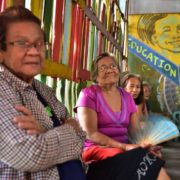
Tokyo, Japan — Aging populations could be a boon to economies in the Asia and Pacific region if governments adopt technology policies that improve elderly people’s health, extend skills and working lives, and facilitate job matching, according to a new report from the Asian Development Bank (ADB).
The Asian Economic Integration Report 2019/2020 (AEIR): Demographic Change, Productivity, and the Role of Technology reviews Asia and the Pacific’s progress in regional cooperation and integration. The report features a special chapter on the role and potential of technology in boosting the productivity of aging economies.
“The aging trend is irreversible in much of Asia and the Pacific, but governments could turn that into a ‘silver dividend’,” said ADB Chief Economist Mr. Yasuyuki Sawada. “Today’s elderly are better educated and healthier than in the past. The right policies on technologies could extend working lives, generating a substantial contribution to the overall economy.”
The average healthy life span increased by nearly 7 years from 57.2 to 63.8 years between 1990 and 2017 for the economies in Asia and the Pacific. The average years of education among 55 to 64-year-old people also increased from 4.6 in 1990 to 7.8 in 2015.
Exact measures that should be taken depend on an economy’s specific aging and education profile but broadly one of four types: fast or slow aging and above or below median education levels.
Countries that are fast aging and have above-median education levels would benefit from adopting automation and labor augmenting technology to supplement the low supply of labor for routine work, while countries with slow aging and below-median education levels could prioritize technical applications in education to help a younger population access high-quality education.
Regardless of the aging and education profiles, the report calls for a rethink of education and skills training to include lifelong learning as well as the adoption of technologies and approaches to make work and workplaces more suitable for older employees. Labor market, social security, and tax system reform would also encourage older people to continue working. Lastly, policies that ease the movement of capital, labor, and technology across borders would be useful to help countries at different stages of demographic transition and technological adoption to cope.
The report notes that regional economic cooperation remains strong in Asia and the Pacific, providing a buffer against the effects of global trade tensions. The latest Asia-Pacific Regional Cooperation and Integration Index, based on 2017 data, shows infrastructure and connectivity made the largest advance but overall regional integration fell nonetheless due to a drop in the money and finance measure. East Asia and Southeast Asia are most integrated with Asia as a whole, while Central Asia and South Asia trail the region’s average.
Asia and the Pacific’s trade is expected to decelerate further in 2019 amid slowing global economic growth. The region’s share of intraregional trade by value remained a robust 57.5% of global trade in 2018, up from the average of 56.3% in 2012–2017. Asia’s inward and outward foreign direct investment grew in 2018, while remittance inflows hit a record $302.1 billion last year.
ADB is committed to achieving a prosperous, inclusive, resilient, and sustainable Asia and the Pacific, while sustaining its efforts to eradicate extreme poverty. In 2018, it made commitments of new loans and grants amounting to $21.6 billion. Established in 1966, it is owned by 68 members—49 from the region.
—
This article was first published by the Asian Development Bank. Visit their website at https://www.adb.org for more information and updates.




